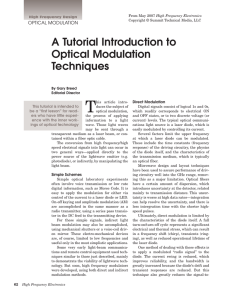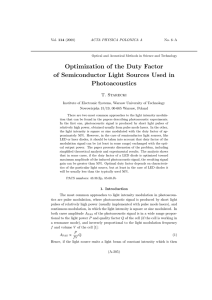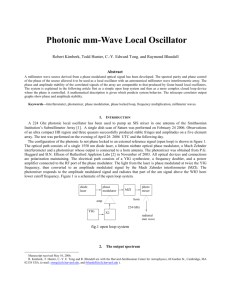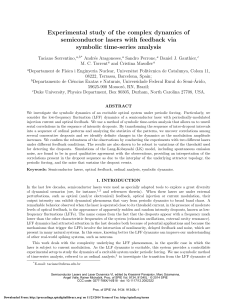Optical Transmitters
advertisement
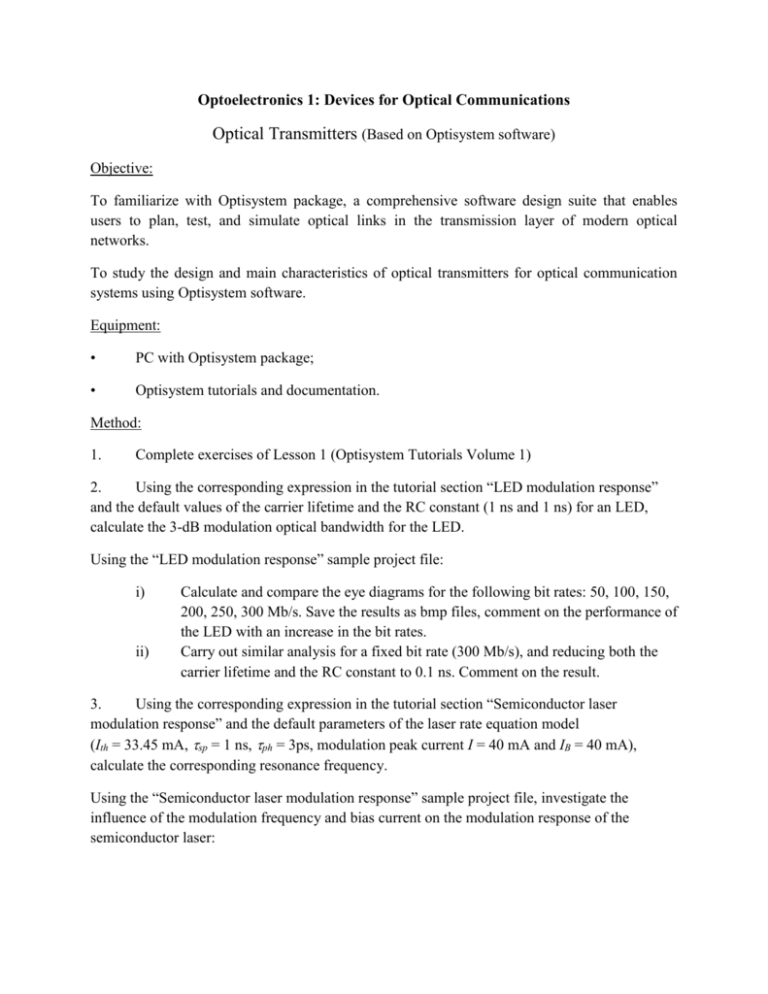
Optoelectronics 1: Devices for Optical Communications Optical Transmitters (Based on Optisystem software) Objective: To familiarize with Optisystem package, a comprehensive software design suite that enables users to plan, test, and simulate optical links in the transmission layer of modern optical networks. To study the design and main characteristics of optical transmitters for optical communication systems using Optisystem software. Equipment: • PC with Optisystem package; • Optisystem tutorials and documentation. Method: 1. Complete exercises of Lesson 1 (Optisystem Tutorials Volume 1) 2. Using the corresponding expression in the tutorial section “LED modulation response” and the default values of the carrier lifetime and the RC constant (1 ns and 1 ns) for an LED, calculate the 3-dB modulation optical bandwidth for the LED. Using the “LED modulation response” sample project file: i) ii) Calculate and compare the eye diagrams for the following bit rates: 50, 100, 150, 200, 250, 300 Mb/s. Save the results as bmp files, comment on the performance of the LED with an increase in the bit rates. Carry out similar analysis for a fixed bit rate (300 Mb/s), and reducing both the carrier lifetime and the RC constant to 0.1 ns. Comment on the result. 3. Using the corresponding expression in the tutorial section “Semiconductor laser modulation response” and the default parameters of the laser rate equation model (Ith = 33.45 mA, sp = 1 ns, ph = 3ps, modulation peak current I = 40 mA and IB = 40 mA), calculate the corresponding resonance frequency. Using the “Semiconductor laser modulation response” sample project file, investigate the influence of the modulation frequency and bias current on the modulation response of the semiconductor laser: i) ii) Calculate and compare the eye diagrams for the bit rates of 1.3 Gb/s and 10Gb/s. Save the results as bmp files, comment on the performance of the semiconductor laser. Carry out similar analysis for a fixed bit rate (1.3 Gb/s), reducing the bias current to 20 mA. Comment on the result. 4. Study the tutorial section “LED spectral distribution”, investigate the influence of the OSA resolution on analysis of the spectral distribution of an LED. Illustrate your findings with corresponding bmp images from the OSA visualizer. 5. Using tutorial section ”Semiconductor laser L-I curve” and the corresponding sample project file, plot the L-I curve for the semiconductor laser with default parameters. 6. Complete the exercise series from the tutorial section “Vertical-Cavity Surface-Emitting Laser - VCSEL Validation”. Document and comment on your results.








